Winter Sensory Bins for Preschoolers: Snowy Fun, Warm Cocoa, and Icy Adventures!
Winter sensory bins are the perfect way to bring the season indoors while engaging children in creative, hands-on learning. Sensory bins encourage young learners to explore textures, practice fine motor skills, and use their imagination. Today, we’re diving into three sensory bin ideas that capture the winter spirit—no snow boots needed! These bins are designed with ages 1-5 in mind and can be easily set up using everyday items and winter-themed fillers. Let’s get started with some snowy, chocolaty, and icy fun!
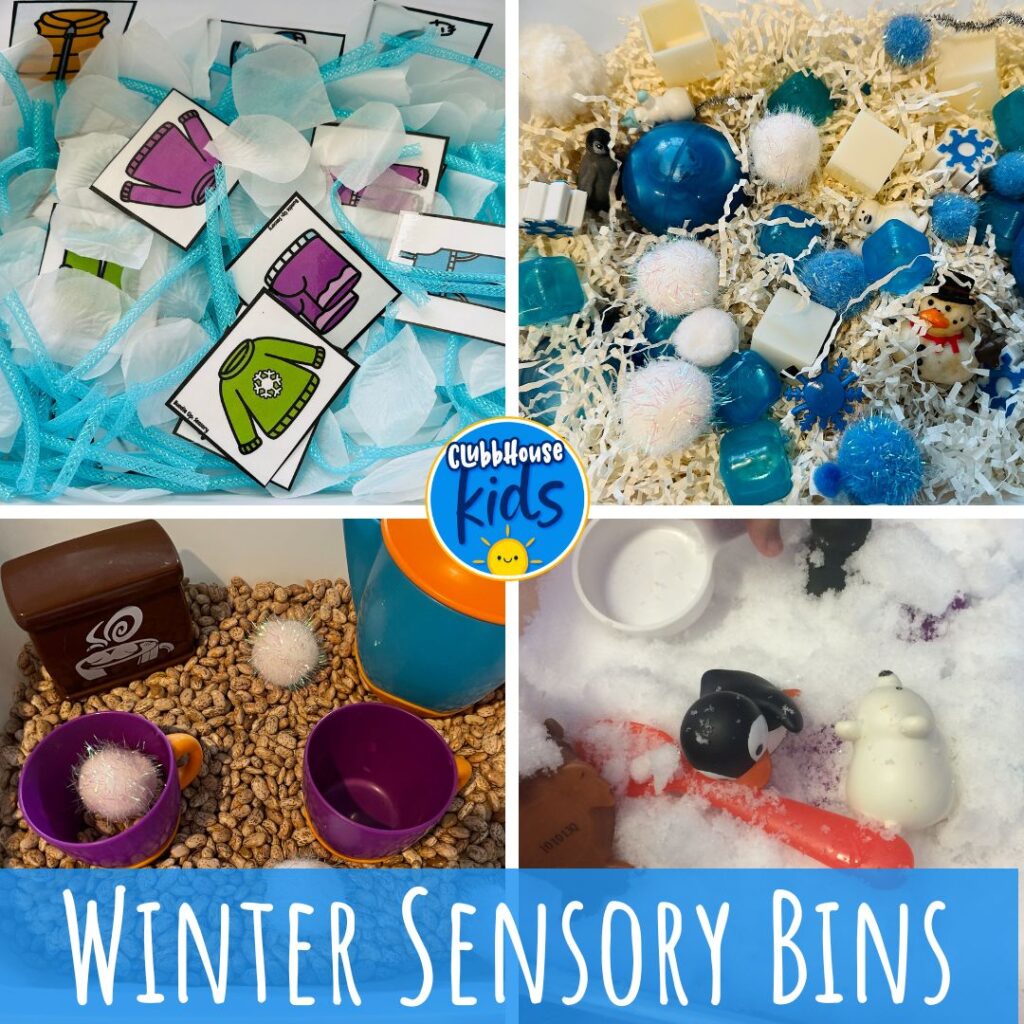
Why Sensory Bins Are Important for Preschool Development
Sensory bins are more than just a fun activity—they play an essential role in early childhood development. By exploring different textures, colors, and temperatures, children can strengthen sensory processing, fine motor skills, language, and problem-solving skills. Through sensory play, children engage in experiences that encourage self-directed learning, allowing them to interact with the world at their own pace. Sensory bins also help to build focus, creativity, and coordination as children pour, scoop, dig, and sift through their sensory materials.
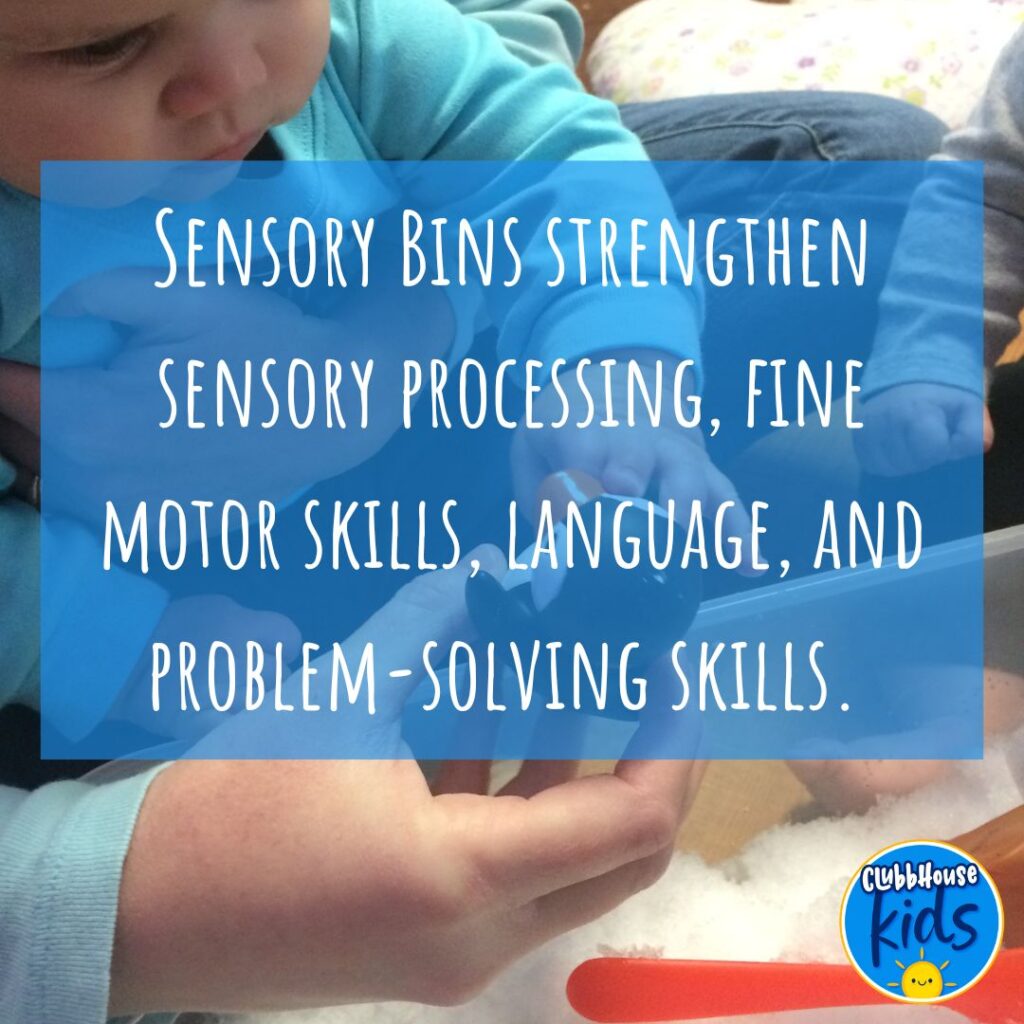
Winter Sensory Bin Ideas for Preschoolers
Snow Sensory Bin
Let’s start with a classic winter experience—a snow sensory bin! This bin brings a snowy wonderland indoors, minus the cold. Kids can pretend they’re outside making snowballs, creating snow hills, or even imagining building their own snowmen. Perfect for kids who love the winter season!
Materials Needed:
- Instant snow powder, real snow, shaving cream, or shredded paper
- Small plastic animals or mini winter toys
- Small shovels, spoons, or scoops
Fun Activity: Encourage kids to make “footprints” in the snow, build small snow hills, or create a mini winter scene with their plastic animals. They can scoop, pack, and pour the “snow” to their heart’s content.
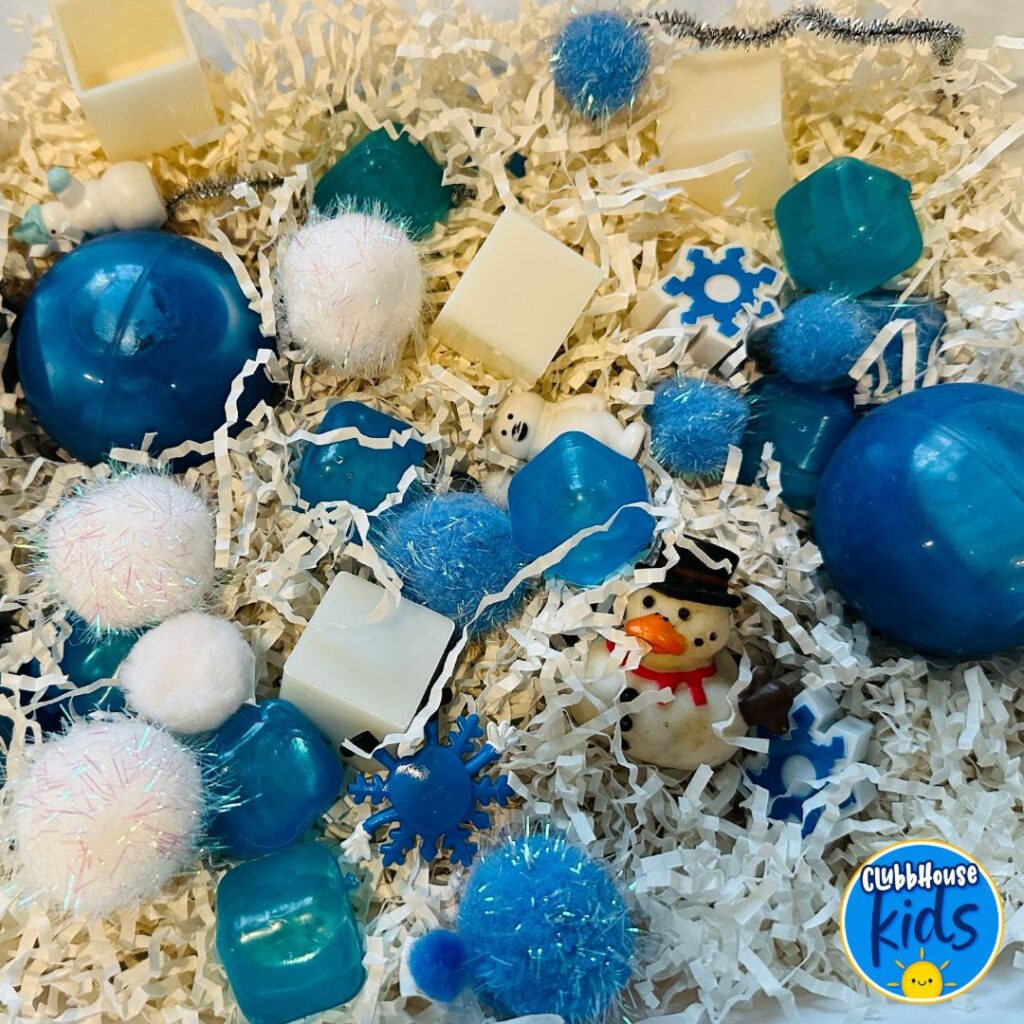
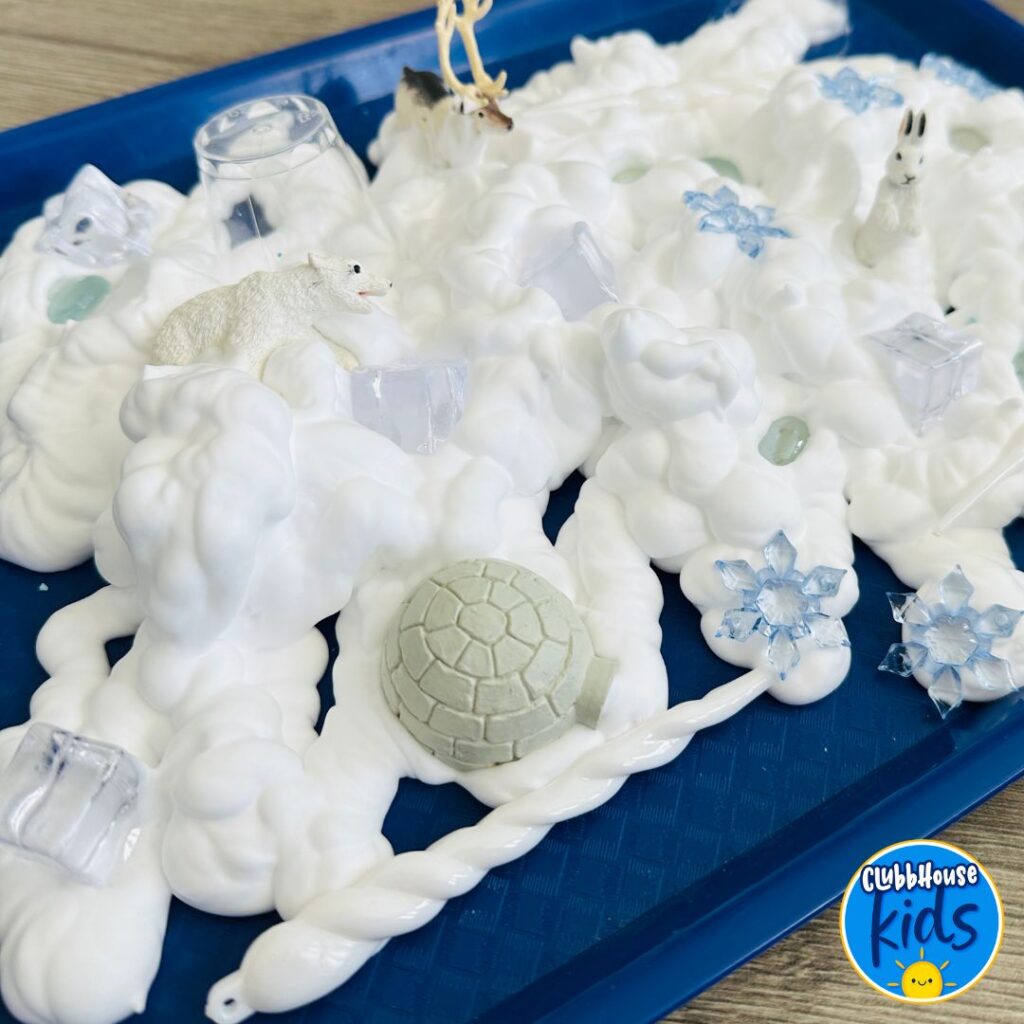
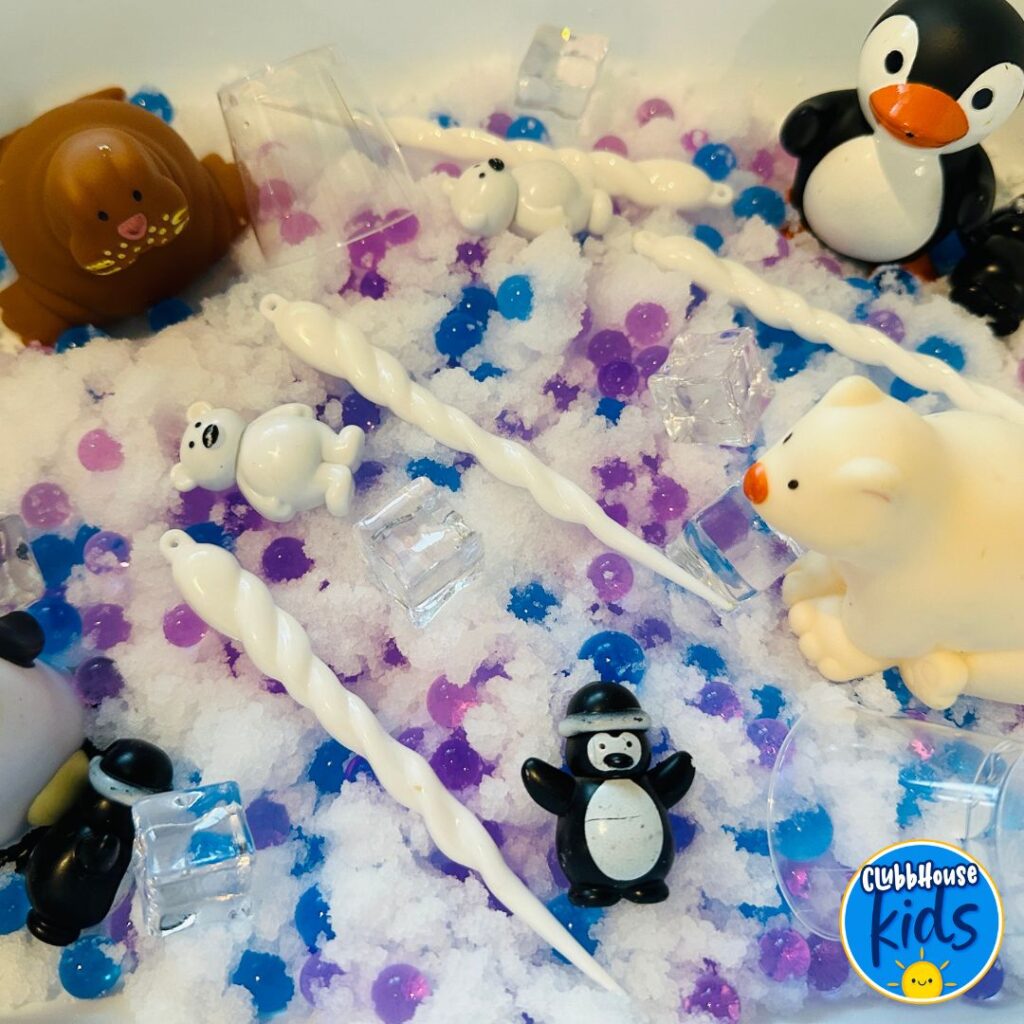
Hot Chocolate Sensory Bin
Nothing says winter like a warm cup of hot cocoa. This hot chocolate-themed sensory bin uses a mix of cocoa powder and brown rice for a fun, mess-free sensory experience. Add marshmallows, cinnamon sticks, and cups to create cozy, chocolatey playtime for your little ones!
Materials Needed:
- Brown rice or beans
- Mini marshmallows, Cotton balls, white Poms
- Cinnamon sticks or plastic spoons
- Small cups and tiny “mugs” for scooping and filling
Fun Activity: Invite children to “make hot chocolate” by scooping and pouring rice into cups, adding marshmallows, and stirring with cinnamon sticks. It’s a great way to play pretend, build social skills, and develop fine motor strength through scooping and pouring.

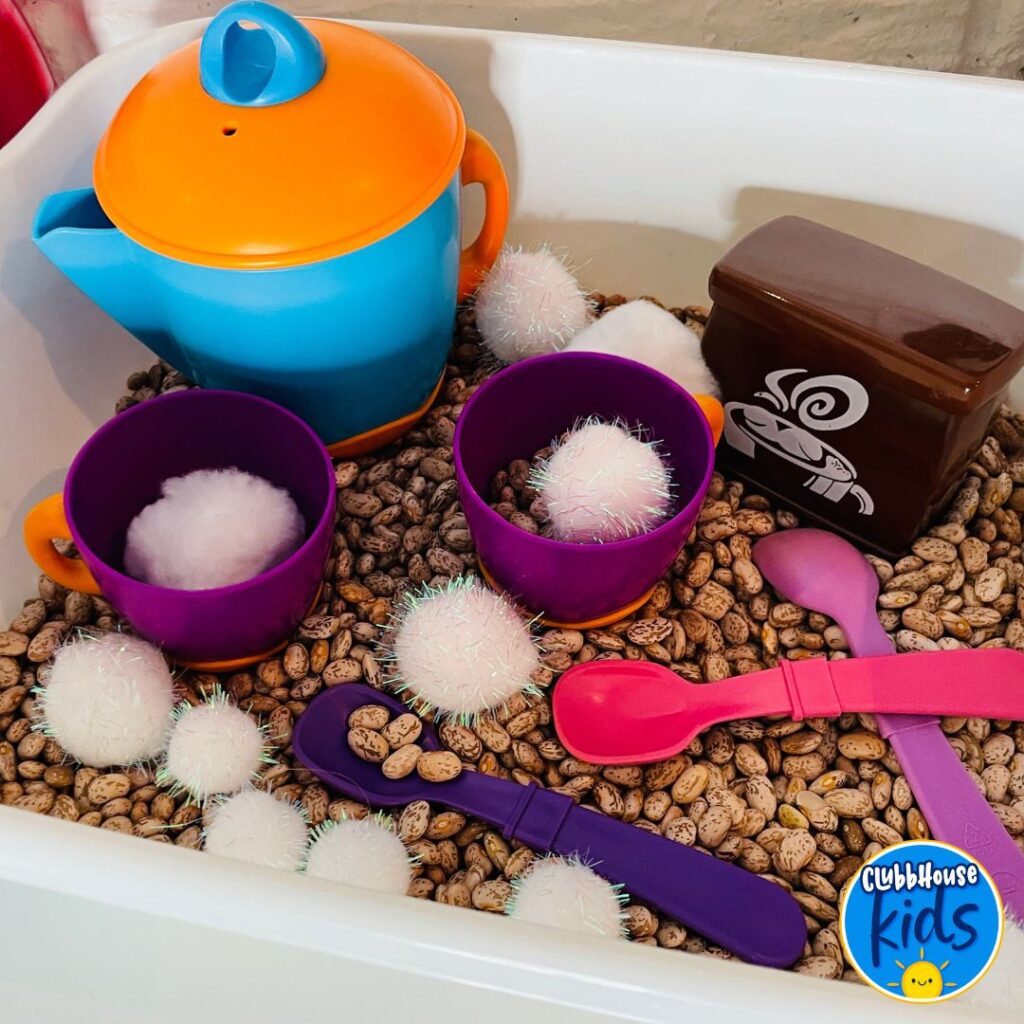
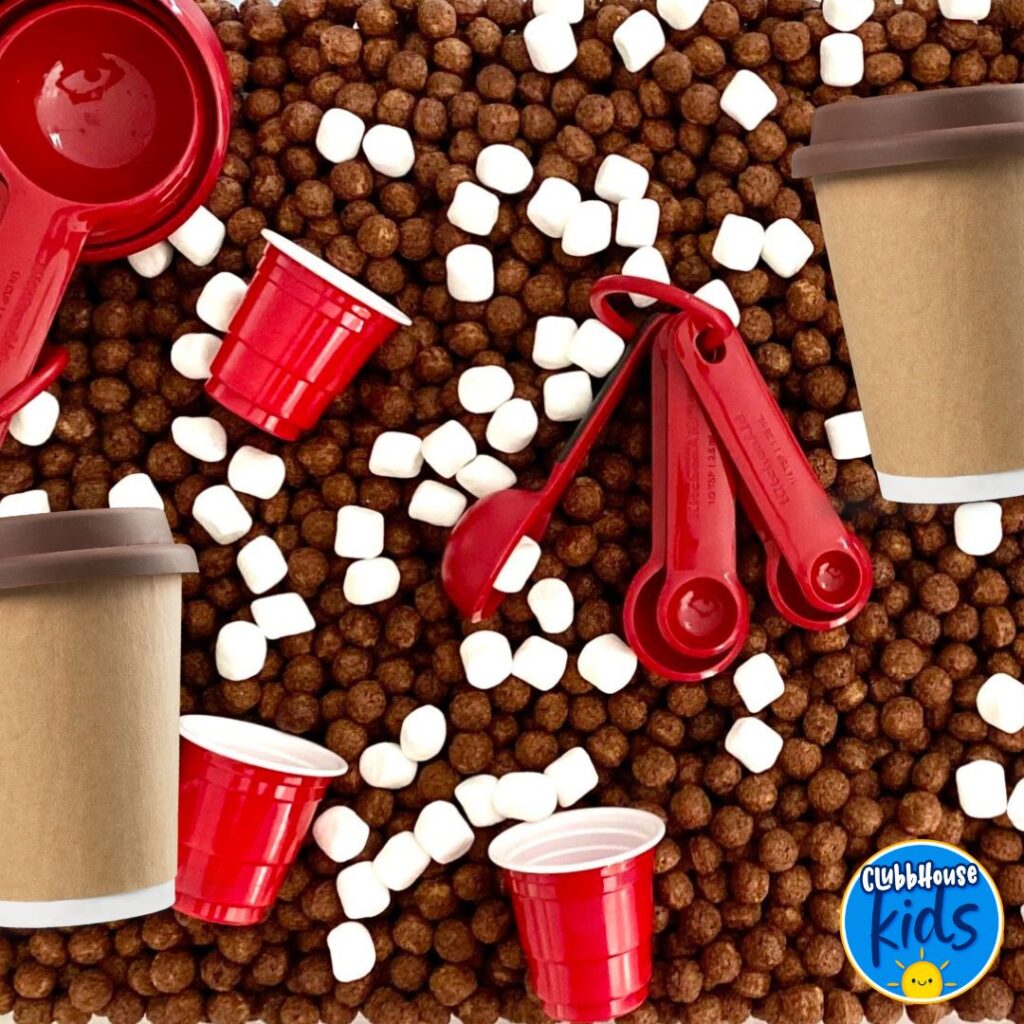
Ice Cube Sensory Bin
Our final type of winter sensory bins adds a frosty, icy touch to the mix! An ice cube bin can provide a different sensory experience by introducing children to chilly temperatures. This bin is an interactive way to explore melting, water, and temperature changes.
Materials Needed:
- Ice cubes (make a mix of regular, colored, and different-shaped ice cubes for variety)
- Shallow bin or tray
- Small plastic animals, like polar bears or penguins or characters
- Scoops, tongs, or spoons
- Optional: salt and warm water in a spray bottle to melt ice slowly
Fun Activity: Encourage children to use tongs to pick up the ice cubes, feel the coolness with their hands, and explore melting by sprinkling salt or using the warm water spray. They can even create a mini “ice rink” for little characters!

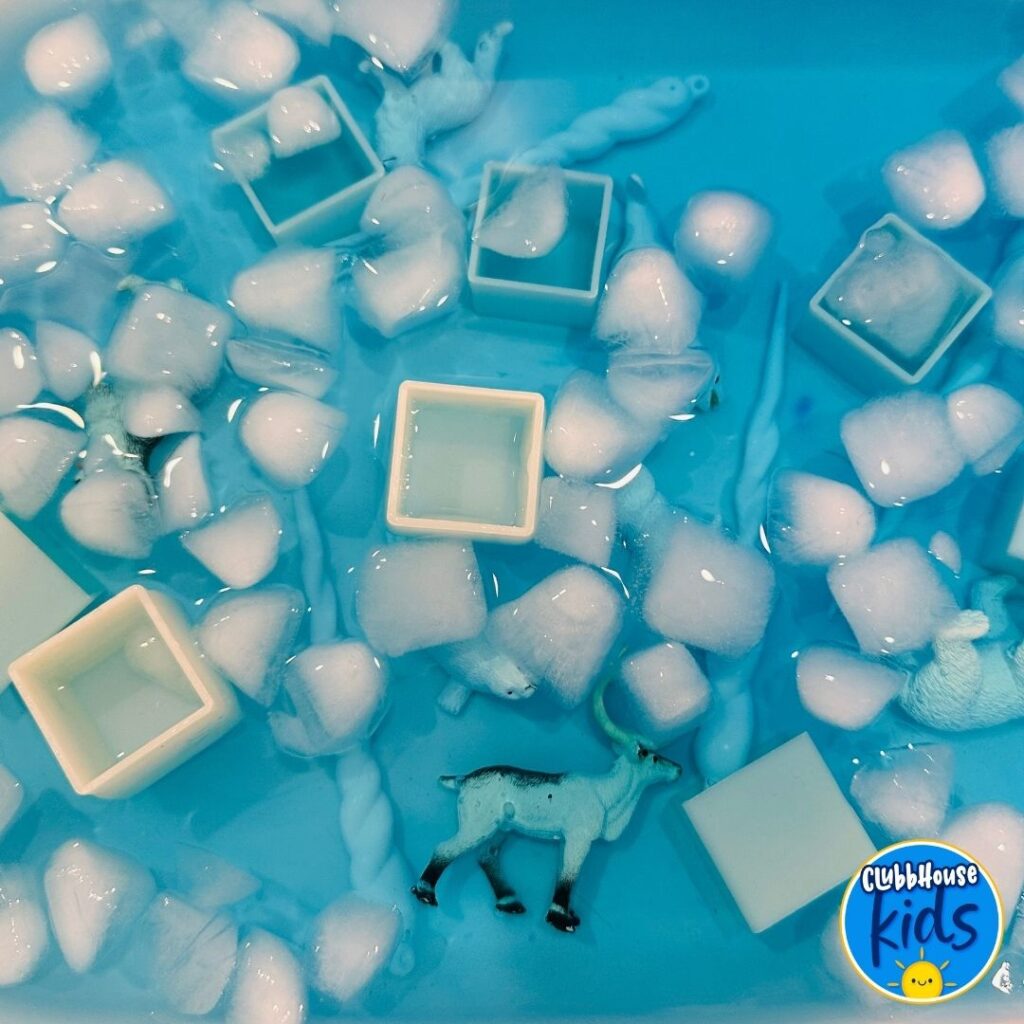
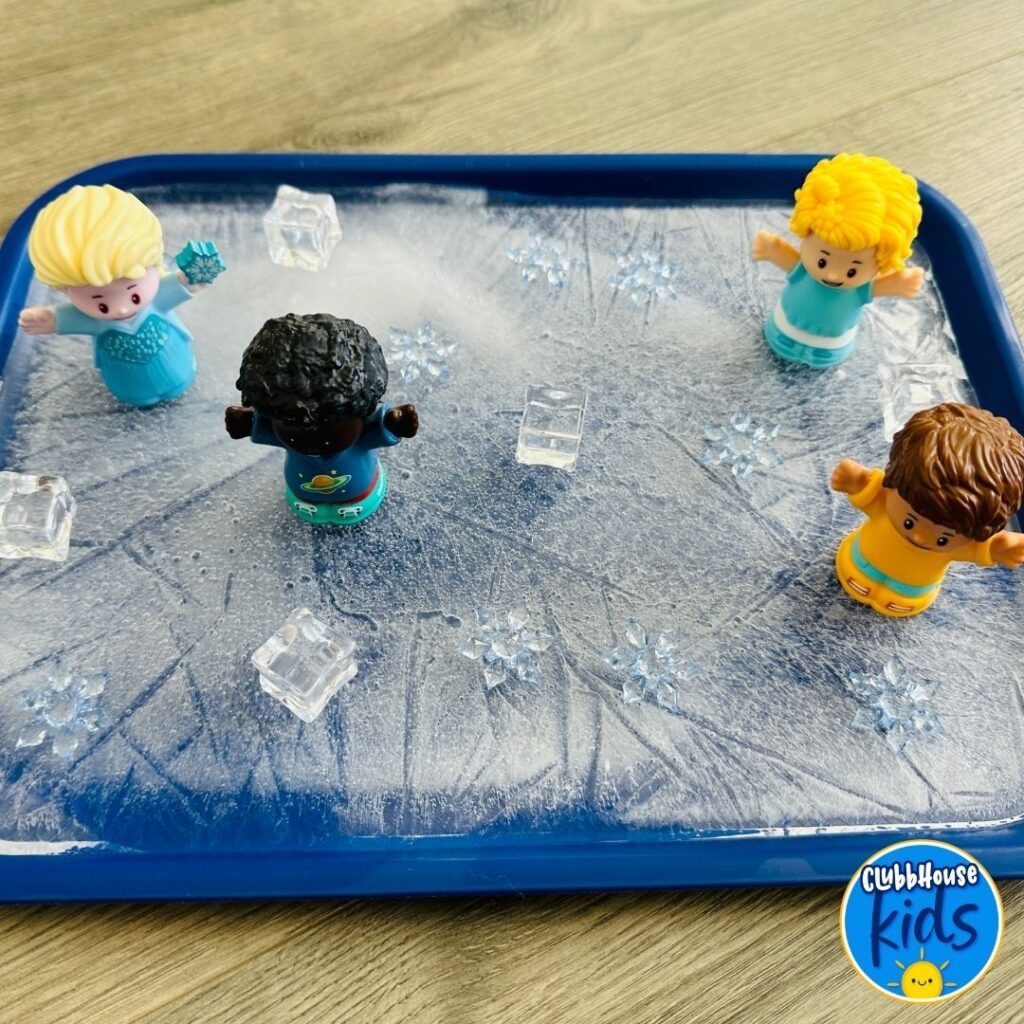
Common Questions About Sensory Bins
Q: Are sensory bins safe for toddlers?
A: Yes, sensory bins can be safe for toddlers when created with age-appropriate materials. For younger children (ages 1-2), avoid small items that can be swallowed and always supervise during play.
Q: Do sensory bins need to be messy?
A: Not necessarily! Many sensory bins can be designed with mess-free materials like dry rice, pasta, or even reusable fillers like plastic gems or felt pieces. However, part of the fun (and sensory experience) can be the mess, so you may want to lay down a mat or do sensory play in a contained area.
Q: How long can I keep a sensory bin?
A: It depends on the materials used! Dry bins (with rice, pasta, etc.) can be reused for weeks if stored in an airtight container. Wet bins or those with perishables should be discarded after each use.
Want More Winter Sensory Bins?
If you’re looking for even more fun, educational, and seasonally-themed activities, check out our Cozy Winter lesson plans. With activities designed to engage little ones in hands-on learning, these plans feature themed ideas for winter and beyond to make learning come alive.
Winter Adventures for Preschoolers
Head back to the main winter theme page for more wintry fun ideas for your classroom and families.
